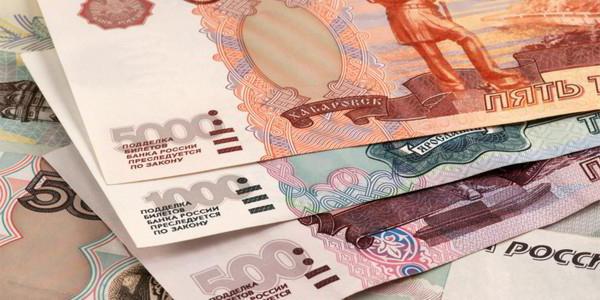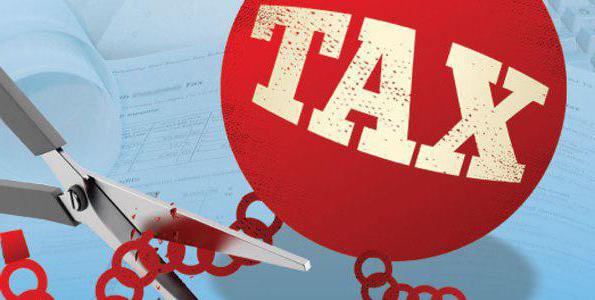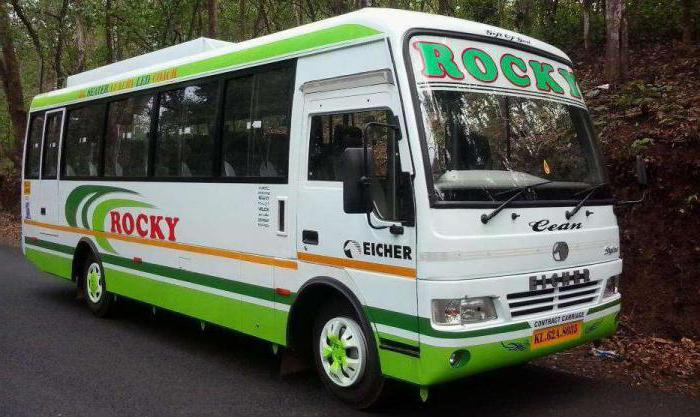Three taxation systems are most popular among Russian entrepreneurs: DOS - general, STS - simplified and UTII - this a single tax on imputed income. Each of them has both its pros and cons. But today we will dwell in more detail on the latter. What kind of system this is, how to properly use UTII - this is the topic of today's article. Let us dwell on each item.
What is UTII
As already mentioned, UTII is a tax on imputed income, that is, a fee that does not depend on the actual revenue of the entrepreneur. The value of the income is “imputed”, that is, it is appointed by the state regardless of whether such income was in reality or not. Such a tax was introduced in order to unify the amount of taxes from those entrepreneurs whose real cash flow is very difficult to control.
On the one hand, UTII is a single tax that is quite beneficial for entrepreneurs. Indeed, real income can be very substantial, much larger than the amount calculated by the state, and the tax will remain at the same level. But there is another side to the coin. If your earnings have fallen drastically, or your business has completely fallen into disrepair, and you haven’t earned anything at all for a month - the tax service doesn’t care, you still have to pay.
Types of business in which it can be applied
Not all business sectors can be subject to UTII - these are activities that are mainly associated with small-scale trade and the provision of services to the population.
These include:
- catering services;
- transport services;
- veterinary services;
- maintenance, washing and repair of machines, inspection;
- car parks;
- domestic services;
- rental of residential and non-residential premises (total area not ˃ 500m2);
- renting out retail space (with an area of not ˃ 150m2);
- retail, outbound trade;
- services for advertising in cars;
- distribution of promotional products, outdoor advertising.

Please note - if an individual entrepreneur conducts several types of activities at the same time, then the estimated amount for UTII is the imputed income for each type of activity separately. Types of active activity fit into permits at the time of registration of a business and may be adjusted. In order not to overpay the excess, promptly exclude inactive activities from the registration certificate.
There are exceptions to each rule.
Despite the fact that UTII is a single imputed tax that applies only in clearly specified cases, there are exceptions to these rules. UTII cannot be applied to the above activities if:
- business is conducted under a simple partnership agreement, a joint activity agreement, and also within trust management;
- activities are carried out by taxpayers, which can be classified as the largest;
- the share of another organization in the business of an enterprise wishing to work on UTII exceeds 25%;
- the number of employees of the company is more than 100 people;
- the above type of activity is carried out by an individual entrepreneur who switched to the simplified tax system (“simplified”) on the basis of a patent;
- renting refers to gas stations or gas stations;
How to calculate the amount
UTII is a tax that is calculated, at first glance, quite simply. The formula consists of four components:
- basic yield - Bd;
- physical indicator - FP;
- main coefficient (deflator) - K1;
- correction factor - K2;
The formula for the calculation is as follows:
UTII = Bd x Фп (for 3 months of the reporting period) x15%.
The resulting amount must be multiplied by K1 and K2 - special coefficients, which we will talk about below.

Tricky "bases"
If you carefully read the previous paragraph, then you can understand that the value of the UTII is purely individual, calculating it without knowing some of the nuances can be problematic. For example, it is not always possible to immediately determine the value of the basic return or physical indicator. Baseline data will also vary for different activities.
For example, even in such a popular type of activity as retail, you can "stumble" on some features:
- if the trade is carried out "peddling" or "distribution", that is, without using the trading floor, then the physical indicator will be calculated as 4,500 p. from one seller;
- the same indicator is accepted when conducting trading using vending machines;
- if the area of the trading floor does not exceed 5 m2, then the physical indicator is 9 thousand rubles (fixed);
- when using a sales area of more than 5 m2, this indicator is taken at the rate of 1 800 rubles for each m2.
There are also other subtleties of the calculation, so that it does not turn out that the UTII is a "surprise" tax, it is better to calculate everything in advance or consult your inspector. Remember: you can change the tax system once a year.
The tax base and odds
To determine the indicators of your type of activity, you need to carefully study the Tax Code, and more specifically, article 346.29. In this article, for each type of activity, a personal basic return per unit of physical indicator is indicated. By the way, an exact definition of what is considered a physical indicator can be found there.
The next indicator necessary for calculating UTII is the K1 coefficient, which takes into account price changes that occurred over the past year, it depends on inflation. In 2016, K1 is 1.798.
Now K2. The value of this coefficient is left to the discretion of local councils. It can vary from 0.005 to 1, more details can be found in the tax office at the place of your registration.
When calculating, it is worth remembering that UTII is paid for each type of activity separately, which means that it must be calculated individually. At the end, all the amounts received must be added up. Even more difficult, if the business is carried out in different municipalities - then you need to calculate and pay tax separately for each OKATO.

How to correlate UTII and other tax regimes
If an individual entrepreneur or organization works “on an imputation”, then they are exempted from other taxes and fees.
Those who choose UTII do not pay:
- VAT (except when it comes to the import of products into the territory of the Russian Federation);
- Personal income tax (for themselves, while the income tax on individuals for their employees continues to be charged);
- single social tax (for oneself);
- tax on property of individuals (meaning that property that is used in entrepreneurial activity).
The single tax does not exempt from the following types of taxes:
- land;
- transport;
- water;
- retirement.
Benefits, deductions
Despite the fact that the estimated amount for UTII is a sane income, that is, a fixed amount, there are ways to pay a little less.
A single tax can be reduced by the amount of contributions that have been paid to various state funds: MHIF, PFR, FSS. It should be borne in mind that UTII can be reduced in size by no more than two times, but this rule does not apply to individual entrepreneurs. If an individual entrepreneur works alone and does not have hired employees, his UTII can be reduced up to 100%.
If an individual entrepreneur works on his own, then he can reduce the single tax by paying to the FSS and PF for himself. If the company has hired workers, then its own contributions are not taken into account, UTII is reduced only by the amount of payments made for employees.
There are several other ways to reduce the amount of tax paid. This can be done solely by changing the physical indicator. For example, if the basis of your calculation is the area of the trading floor, it is worth considering how efficiently it is used. Most likely, your business will not lose anything if you convert a part of the premises into a utility room or increase the “trading” load per square meter.

If the quantity of hired personnel acts as a physical indicator, it is worth considering how each of the employees copes with their duties. Maybe it makes sense to slightly reduce the number of staff or to transfer some of them to part-time.
Reporting and subtleties of accounting
One of the forms of reporting on UTII is income statement. It must be submitted quarterly, no later than the 20th day of the month following each reporting period. And the tax itself is paid no later than the 25th day of every first month, which follows the reporting period.
For periods (tax) from 2012 to 2014, the UTII report is a declaration in the form of No. MMV-7-3 / 13, approved by order of the Federal Tax Service of the Russian Federation. Since the first quarter of 2015, the declaration form has changed a bit. The procedure for filling it out is established by order No. MMV-7-3 / 353 of the Federal Tax Service of the Russian Federation of 04.07.14.
If the company was organized in the form (form) of a business company, then you will additionally have to submit an accounting report on losses and profits. For individual entrepreneurs, this requirement does not exist. Such a report is also submitted quarterly before the end of the month following the reporting period.
Those enterprises that have hired employees must submit accounting documents for personal income tax (until April 1 of next year).
If the activity of the enterprise is related to the payment of transport or land tax, then the relevant reports must be submitted before February 1, and for water tax - by the 20th day of the month that follows the reporting period.
Documents for payments to state funds (for employees and themselves) will also have to be submitted quarterly, by the 15th of the next month.
The payment of UTII can be suspended (the company is exempted from payments) if it is proved that the activity of the enterprise was not carried out due to force majeure circumstances or other reasons recognized by the tax service as such. In all other cases, you will have to pay tax, regardless of what you received at the end of the month - profit or loss.

The tax inspectorate also provides fines:
- untimely submission of a declaration entails punishment in the form of payment of 5% of the amount of tax, but not less than 1 thousand rubles;
- if the tax was not paid on time, you face a fine of 20% of the amount of the contribution (if it is proved that the delay was intentional - 40%).
How to start working on UTII
There is nothing complicated in the exercise of their right to work on UTII. If your business is associated with activities that provide for the possibility of applying "imputation" - just take the application to the fiscal tax service at the place of registration.
If your company does not advertise, does not provide transportation services and does not sell “peddlers,” you can file an application with the tax service located in the territory where the business is conducted. It doesn’t matter where you are registered.
Entrepreneurs who change their minds about working on a single tax can also exercise their right to refuse to pay UTII by submitting a corresponding application to the tax service.
It is important to remember that the transition to a new tax system can only be done once at the beginning of the calendar year. Such a rule is clearly spelled out in article 346.28 of the Tax Code of the Russian Federation.
"Pitfalls" of the single tax
The income that an entrepreneur paying a single tax can receive is unlimited. Neither the minimum, nor the maximum in this case is not indicated anywhere.But there are some subtleties regarding activities and their accounting.
If you provide domestic services, then you can work on an “impute” only if your customers are individuals. The provision of domestic services to enterprises does not fall under the classification of types of activities that can work on UTII.
The same nuances apply to car repair, vet services, and some other activities. For parking lots and enterprises providing transport services, it is not always easy to calculate the physical indicator. The fact is that the term “paid parking” includes the entire used area, and the transport company considers only the area occupied by the actually used machines. At the same time, when recounting the fleet of cars, all cars will be taken into account.
If the delivery of goods is indicated in the activities as a separate service, then this type of activity may be subject to a single tax. But if delivery is free, or its price is already included in the price of the goods, then the "imputation" is not suitable here.
There are a lot of such moments in the legislation, therefore, before starting to use UTII, it is best to consult with specialists in this matter and study the Tax Code in detail.



